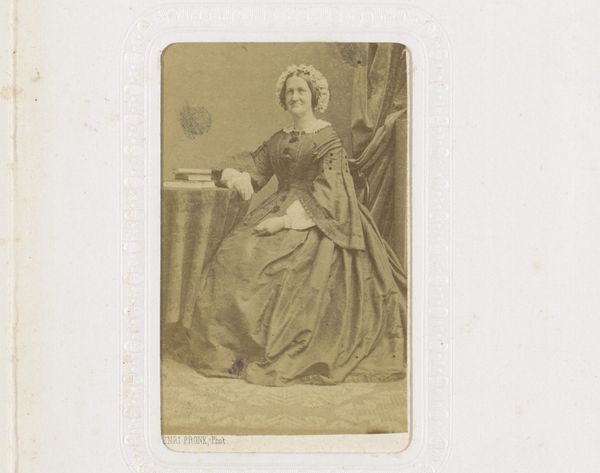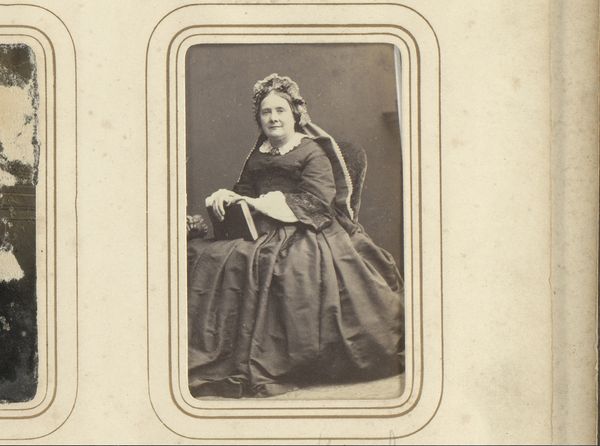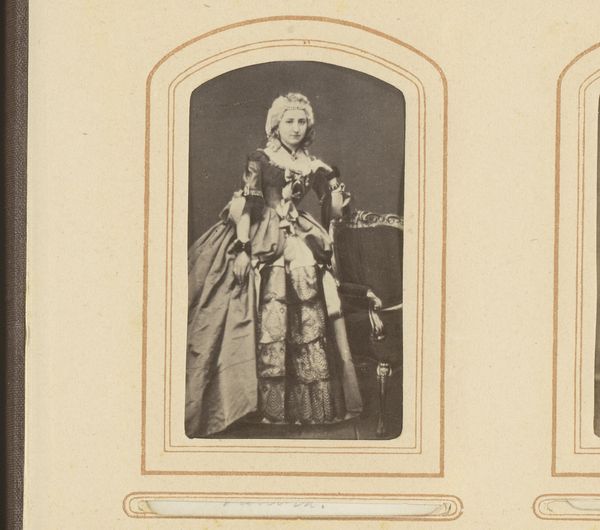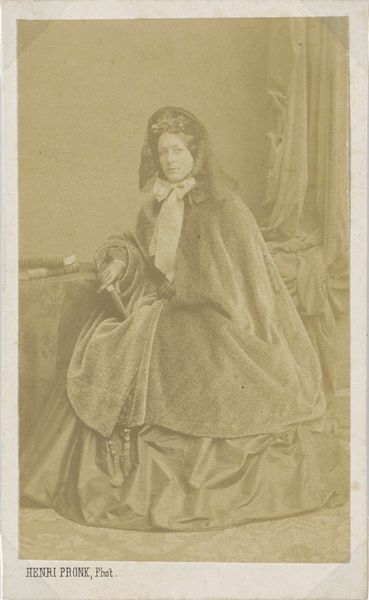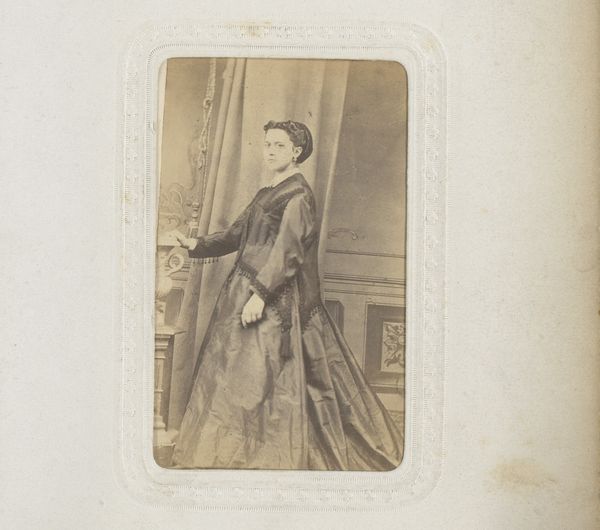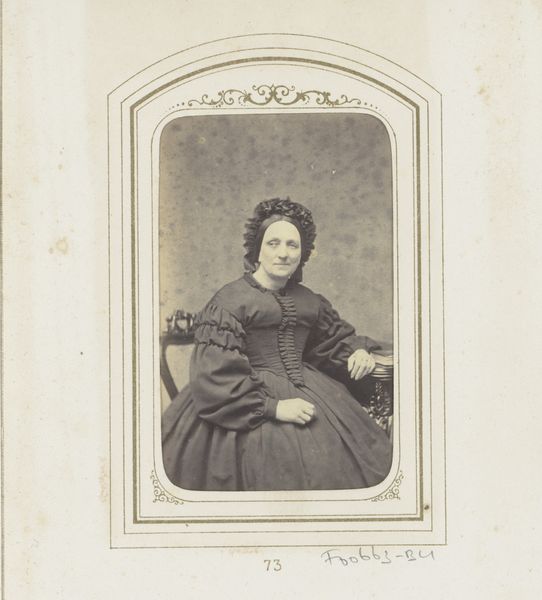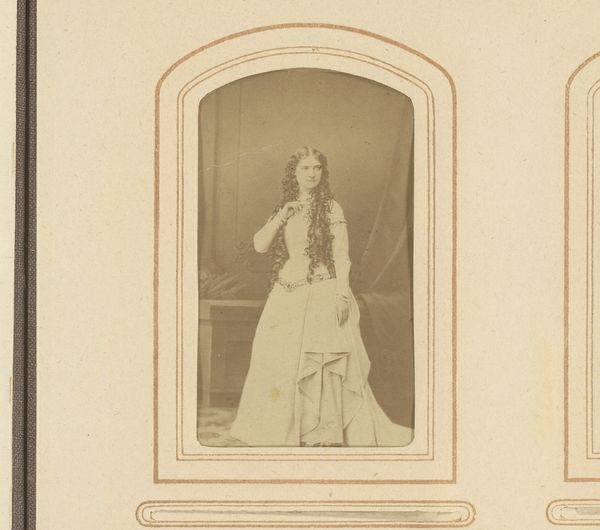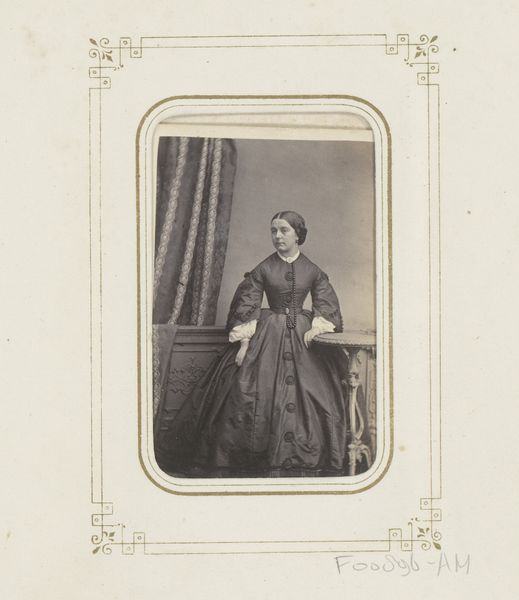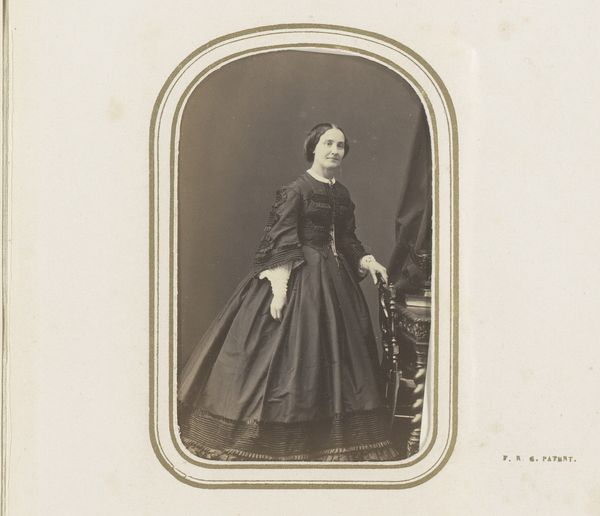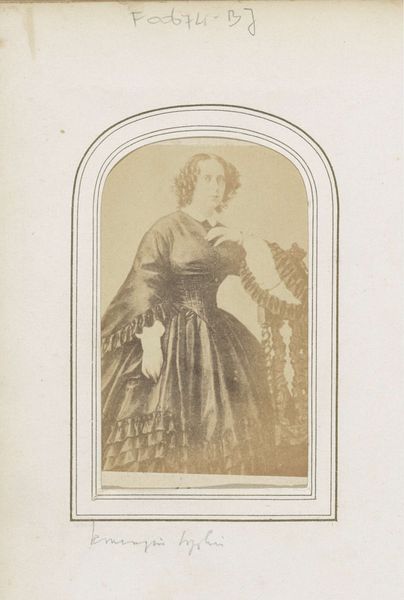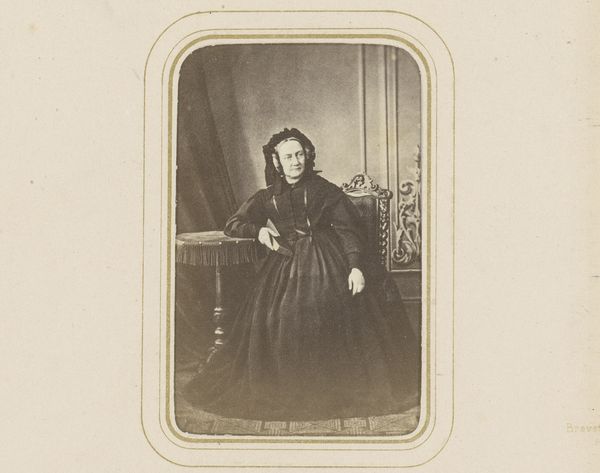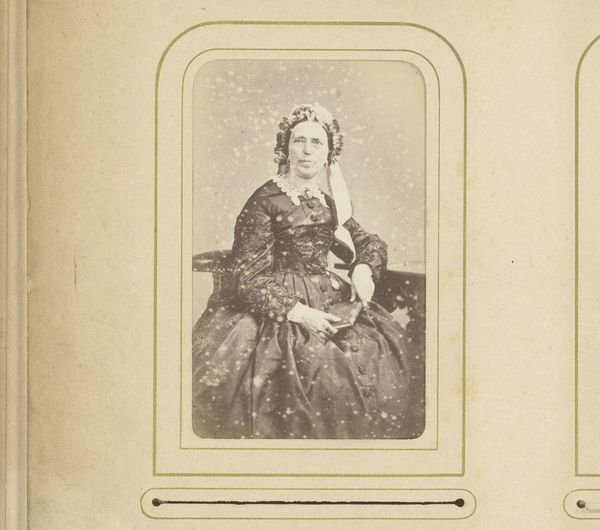
Dimensions: height 83 mm, width 52 mm
Copyright: Rijks Museum: Open Domain
Curator: Welcome. Here we have "Portrait of an Actor Dressed as a Woman" by André-Adolphe-Eugène Disdéri, created sometime between 1860 and 1890. It’s a photographic print, and the image shows a person dressed in elegant female clothing, in front of a neutral background. Editor: Immediately, what strikes me is the quiet defiance in their gaze. The performance within the performance; to be a man dressed as a woman being photographed… It speaks volumes. Curator: It’s a really captivating image, especially when you consider the symbolism inherent in costume and disguise during that era. Clothing was so heavily coded, the blurring of those lines here becomes quite significant. What are the possible layers of representation at play here, considering shifting cultural understandings of gender? Editor: Absolutely. This isn’t simply about putting on a dress. It is about challenging, subverting, or perhaps even celebrating notions of femininity. Were they acting as part of their craft? I want to explore how societal norms shape identity, especially the rigid binaries. Curator: We could look at archetypes associated with performers. Clowns have existed for millennia; the stage has always been a sanctioned place for certain subversions. What sort of symbolic liberation do we observe, considering shifting cultural acceptance? It may appear transgressive at the time. Editor: Perhaps even offering commentary. As much as this portrait feels constrained, I can sense a subversive potential brewing underneath, challenging dominant ideologies. And what narratives is Disdéri trying to tell us through a person in disguise? Curator: Photography, then a relatively new medium, captured not just the surface but something of the subject’s interior world, especially the psychological implications. It seems almost to document a soul grappling with convention. What do you think Disdéri might say about what he captured? Editor: These early photographic images, so bound by the formality of their age, also capture these small acts of rebellion—gestures, gazes—and memorializing, even if unintentionally, these marginalized figures. Curator: A potent reminder that symbols and self-representation are deeply linked to the prevailing social and cultural atmosphere. This era also held many other portraits; here we have one with many faces contained in just one person. Editor: Definitely something for the modern viewers to discuss while considering gender expression, representation and the historical context.
Comments
No comments
Be the first to comment and join the conversation on the ultimate creative platform.
